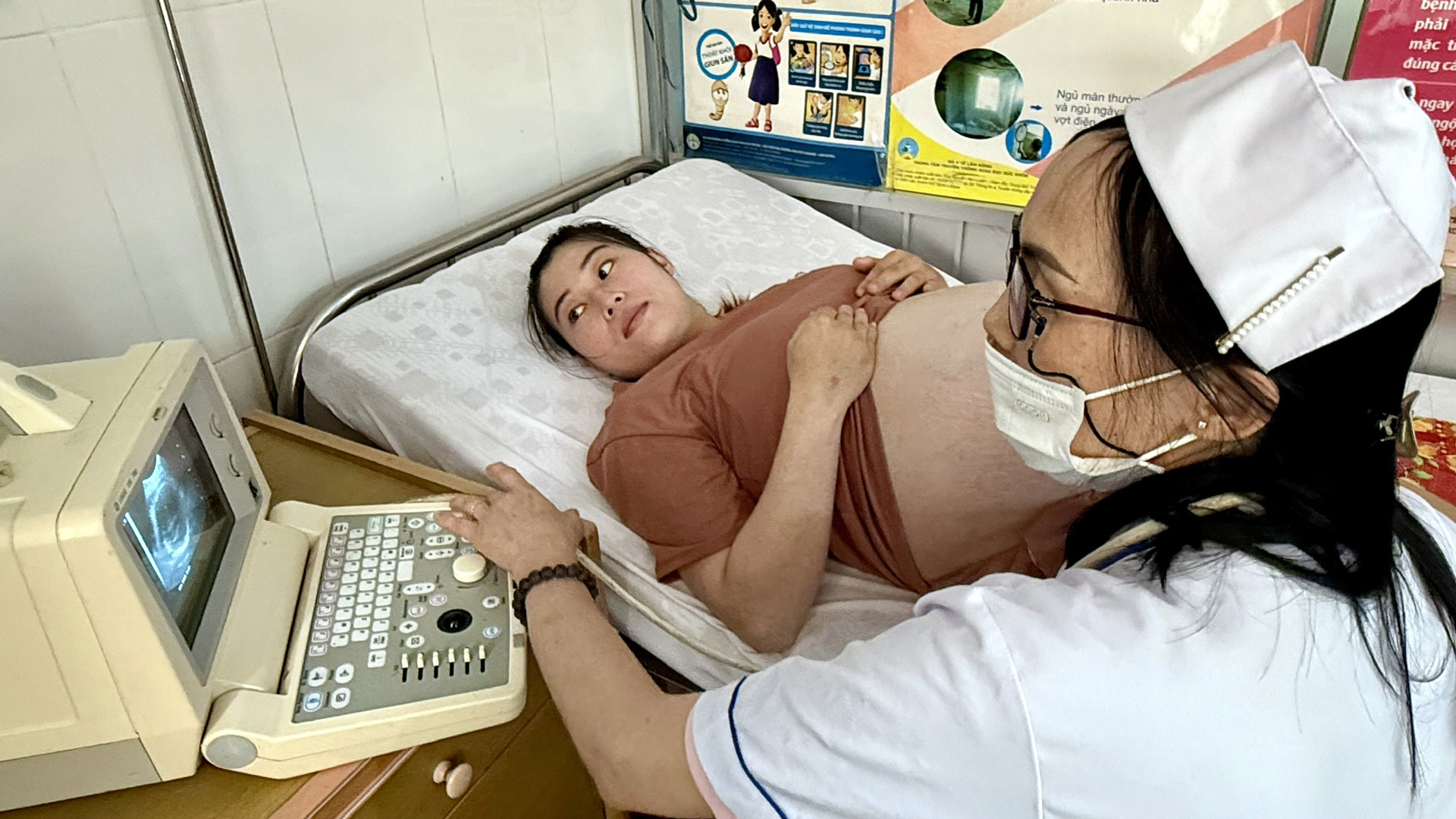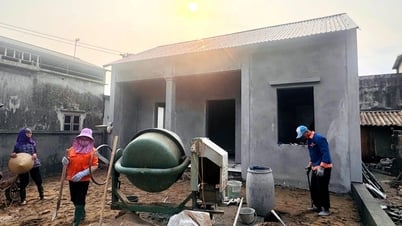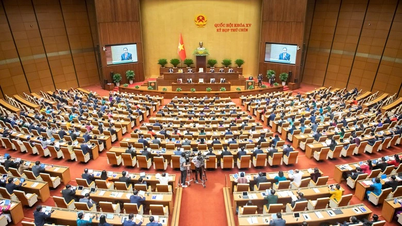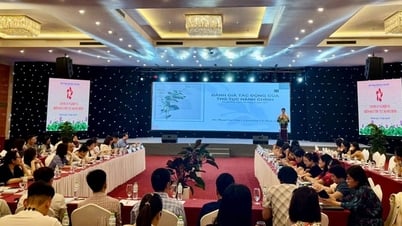 |
| Ultrasound monitoring of pregnant women's health at Dai Lao Commune Health Station, Bao Loc City |
The Lam Dong Provincial Health Department has promptly advised the Provincial People's Committee to issue a plan to implement the Project to Control Gender Imbalance at Birth in the province. As a result, the sex ratio at birth in Lam Dong province in the period of 2015 - 2022 decreased by an average of 0.68 points per year. In 2015, the sex ratio at birth was 112.8 boys/100 girls (1.1 points higher than the national average); by 2022, the province's sex ratio at birth was 108 boys/100 girls (equivalent to the national average). After 7 years of implementing the Provincial People's Committee's Plan to implement the Project to Control Gender Imbalance at Birth in Lam Dong province, in the period of 2016 - 2020, the province has effectively controlled the growth rate of the sex ratio at birth in the province, the following year is lower than the previous year, while the national sex ratio at birth tends to increase. This achievement is thanks to the communication and mobilization work with the participation of the entire political system and the community. In particular, the role of the leader is a decisive factor in the success of implementing population policies in general and reducing the sex ratio at birth in particular. The pioneering and exemplary role of cadres and party members has a profound and widespread influence on the implementation of population goals. In fact, where cadres and party members are exemplary, population work is given attention and implemented well.
Entering the new phase 2023 - 2025, the Project to Control Gender Imbalance at Birth in this phase in the province determines the goal of effectively controlling the rate of increase in the sex ratio at birth, moving towards bringing the sex ratio at birth back to the natural balance, contributing to improving the quality of human resources, serving the cause of industrialization and modernization of the country. In 2023, the sex ratio at birth in the whole province is 107.3 boys/100 live births (1.15 points lower than the whole country) and the whole country is 118.8. In 2024, the sex ratio at birth in the whole Lam Dong province is 108.4 boys/100 live births, 0.56 points lower than the whole country (the whole country is 111.4 boys/100 girls); In which, the sex ratio at birth for Kinh people is 106.2 and for ethnic minorities is 110.5. The average number of children per woman of childbearing age in the whole province is 2.1 children per woman; in which, Kinh people is 1.7; ethnic minorities is 2.5.
The province's goal by 2025 is to reduce the growth rate of the sex ratio at birth by an average of 0.4 percentage points per year, so that this ratio reaches below 109 boys/100 girls, moving towards bringing the sex ratio at birth back to its natural balance, contributing to improving the quality of human resources and serving the cause of industrialization and modernization of the country.
Pharmacist Huynh Thi Phuong Duyen - Director of Lam Dong Department of Health said: In order to gradually control the rate of increase in the gender imbalance ratio at birth and move towards a natural balance, there must be more synchronous and drastic solutions in the coming time. The health sector proposes a number of specific solutions as follows: It is necessary to make the most of the leadership and direction of Party committees and authorities at all levels, the coordination of departments, branches and organizations in enhancing the responsibility of management, operation and organization of the provision of health services in general and reproductive health care services, family planning and health agencies at all levels in particular. Health units at all levels must be proactive and well prepared, fully equipped with essential equipment and medicines, especially not to lack contraceptives to provide to the people.
Focus on providing reproductive health care and family planning (FP) services to vulnerable groups such as adolescents, young people, women, especially ethnic minority women living in remote areas, economically disadvantaged areas, poor families, etc. Strongly and effectively deploy communication and education activities in general and communication to change behavior on population - FP in particular with content, form and approach suitable for each region, each group of vulnerable groups, hard-to-reach groups in difficult, remote, isolated areas, and FP areas to raise awareness, attitudes and practices on population, reproductive health, and FP for population groups. Along with the above solutions, population policies also need to be implemented flexibly, while encouraging people to have children responsibly in accordance with their conditions and circumstances and in accordance with the economic and social development conditions of the locality and country.
In recent years, the health sector has strengthened inspection, examination, supervision and handling of violations of regulations on prohibiting fetal sex selection, strictly handling violations according to the provisions of law... implementing many measures such as integrating propaganda, mobilizing all levels, sectors and people on prohibiting fetal sex selection. However, the efforts of the sector are not enough to change the awareness of a part of the people, so in the coming time, the participation of the whole society is needed. The provincial health sector has stepped up propaganda to change the ideological concept of "respecting men and despising women", society needs to create opportunities for women to participate more in vocational training, finding jobs; establishing a fund specifically for girls to develop their future...
Comprehensively innovate and diversify communication forms and methods suitable for each region and each target group. Promote communication on mass media in the province and locality; focus on exploiting and developing the advantages of information technology and other modern forms of communication. Improve the quality and effectiveness of communication through a team of reporters, propagandists and population collaborators to create a widespread influence throughout society, especially in remote areas, ethnic minority areas, focusing on women of childbearing age, couples with only girls...
Source: https://baolamdong.vn/xa-hoi/202504/thuc-trang-va-giai-phap-dam-bao-can-bang-gioi-tinh-khi-sinh-4625ca6/



![[Photo] Prime Minister Pham Minh Chinh holds talks with Prime Minister of the Kingdom of Thailand Paetongtarn Shinawatra](https://vphoto.vietnam.vn/thumb/1200x675/vietnam/resource/IMAGE/2025/5/16/23b5dd1e595d429491a54e3c1548fb79)

![[Photo] Welcoming ceremony for Prime Minister of the Kingdom of Thailand Paetongtarn Shinawatra on official visit to Vietnam](https://vphoto.vietnam.vn/thumb/1200x675/vietnam/resource/IMAGE/2025/5/16/cdd9e93739c54bb2858d76c3b203b437)



















































































Comment (0)